What Makes Kitchen Cabinets High Quality?
When you’re investing in a kitchen remodel, it’s easy to get swept up in colors, finishes, and styles. But underneath that pretty exterior, your cabinets are doing the heavy lifting. Quality matters. A lot. Here’s how to tell if a cabinet is worth your money.
Cabinet Construction: Wood vs. Particleboard
The strength and longevity of your cabinets start with what they’re made of. While the exterior may catch your eye, it’s the cabinet box that carries the weight, and the wear. Cabinets made from high-quality, cabinet-grade plywood offer excellent durability, moisture resistance, and structural integrity. On the other hand, particle/chipboard is a lower-cost material that’s more prone to warping, swelling, and breakdown over time, especially in kitchens where humidity and daily use are constant factors.
Plywood Boxes
The gold standard for durability. Multi-layered and cross-grained, they hold up against moisture, heavy loads, and decades of daily use.
Chipboard/Particle Board
Although these are often hidden behind fancy veneers, this material is prone to sagging, swelling, and long-term failure.
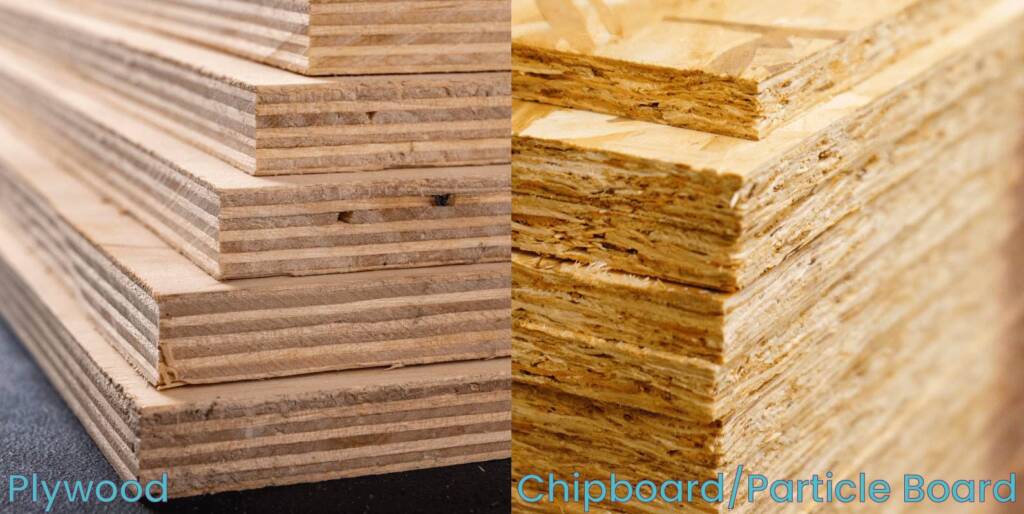
Door Slides & Door Hardware
Even the best-built cabinet won’t perform well without reliable hardware. Drawer slides and door hinges affect how smoothly your kitchen functions every day. Full-extension, undermount drawer glides allow you to access the entire drawer and provide better support for weight. Soft-close hinges reduce slamming, improve safety, and extend the life of the cabinet. Poor-quality or surface-mounted hardware, on the other hand, often wears out quickly or creates frustration in daily use.
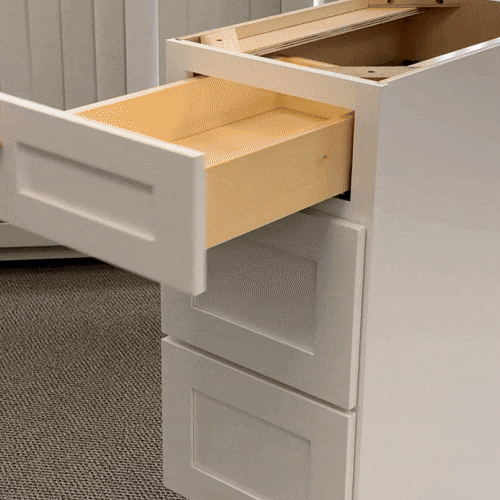
Look for undermount, full-extension drawer glides. These allow you to use the entire drawer and support more weight.
Soft-close hinges should be adjustable and smoothly dampen movement, not slam or stick.
Joinery That Holds Up
The way cabinet components are joined together has a huge impact on long-term durability, especially for drawers, which see daily wear and tear. High-quality joinery ensures that drawers stay square, glide smoothly, and don’t loosen or break down over time. Inferior construction methods might look fine at first glance but often lead to separation at the corners, sagging, or failure under weight.
Dovetail Joint
These interlocking joints give you far more strength and durability than basic staples or butt joints.
Dowel Joint
Methods like dowelling are acceptable in some cases, but dovetails are the clear winner for drawer longevity and quality.
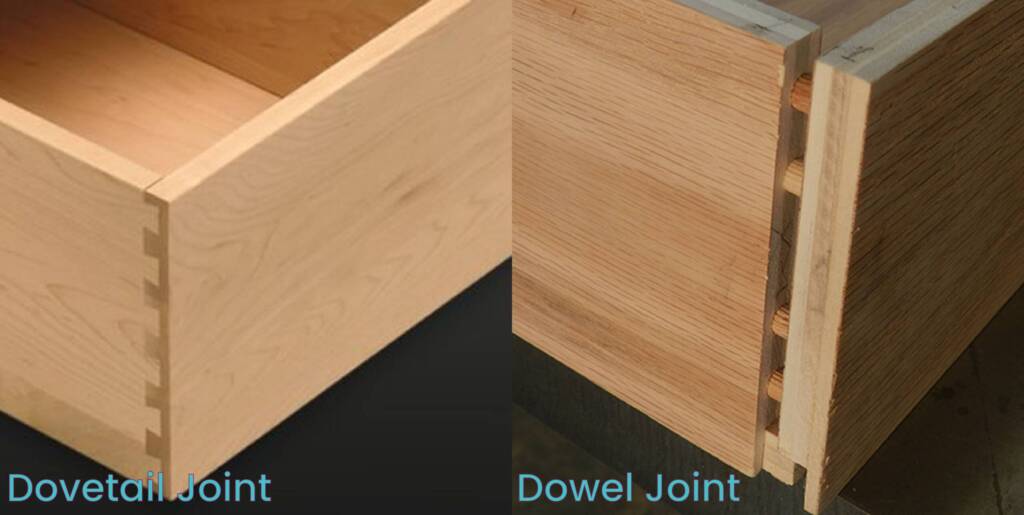
Cabinet Face Frames & Doors
Cabinet doors and face frames contribute both to the look and the longevity of your kitchen. A sturdy face frame helps reinforce the cabinet structure and provides a reliable mount for hinges and doors. High-quality doors resist warping, cracking, and surface damage. Cheaper alternatives, like thin veneers or hollow-core materials, may not hold up to repeated use, humidity, or accidental impacts over time.
A face frame (the structure the doors attach to) should be sturdy, square, and properly joined, preferably with mortise and tenon or similar strong techniques.
Mortise and tenon is a traditional woodworking technique where pieces of wood connect by fitting a peg (tenon) into a slot (mortise), creating a strong, lasting bond without relying on nails or screws.
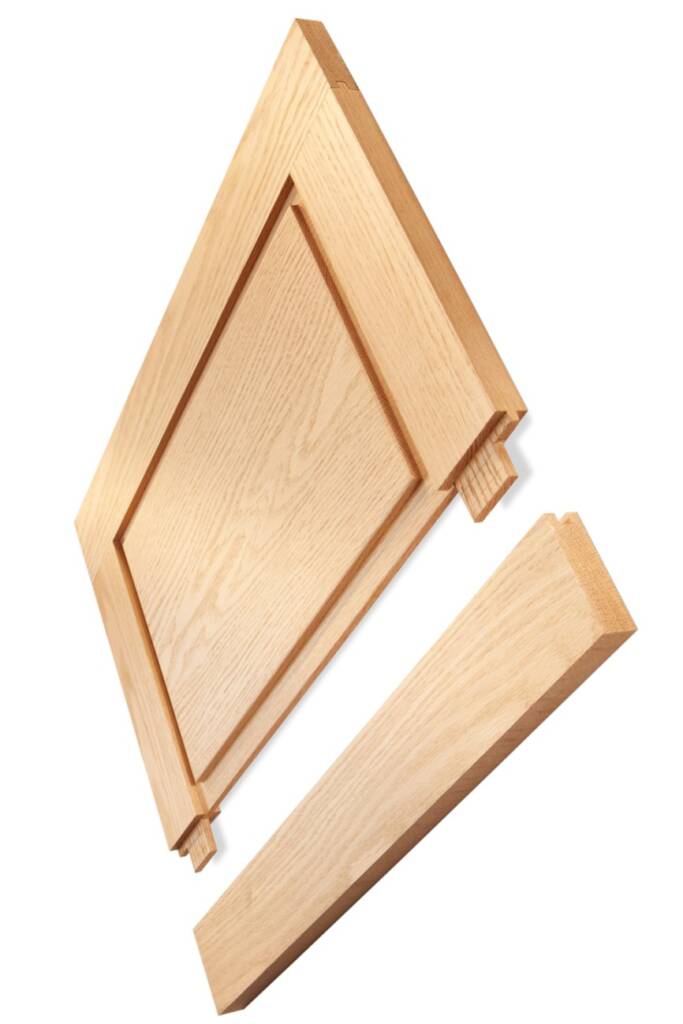
Bottom Line: Quality Cabinets Are Built to Last
Great cabinetry isn’t just about looking good on day one, it’s about holding up for decades under daily use. When assessing cabinet quality, pay attention to the parts you don’t see at first glance. Look beneath the surface. Ask about construction, materials, and hardware.
In our work, we prioritize cabinets that are as solid on the inside as they are stunning on the outside. If you’re not sure how to tell the difference, we’re happy to walk you through it.
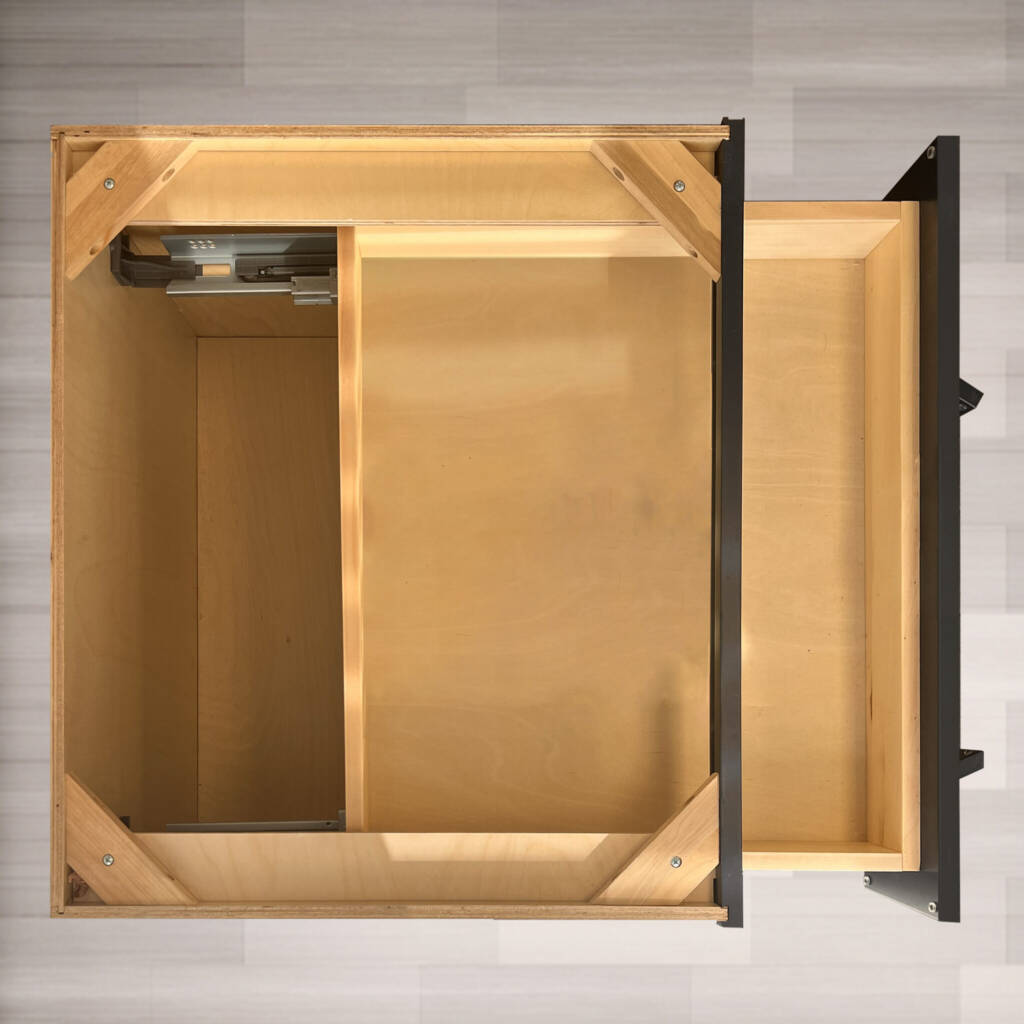
Still Have Questions about Quality Cabinetry?
Schedule your complimentary design consultation and estimate with Kitchens Rx today, and take the first step towards the perfect kitchen.



